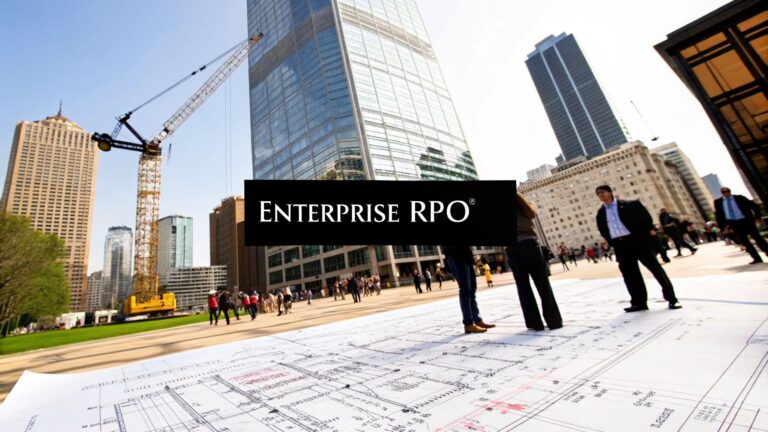Introduction
Employee engagement is more than just a catchphrase in the modern business environment. It is the cornerstone of an effective business. Engaged workers are more than simply numbers. They are a source of enthusiasm and dedication that spur creativity and productivity.
This blog explores the intricate details of employee engagement at all levels and provides doable strategies for raising job satisfaction and fostering lasting employee loyalty.
The Employee Lifecycle and Its Six Stages
As an organization, the journey of the employee lifecycle unfolds like a captivating narrative, starting from attraction and ending with offboarding. Each stage plays a crucial role in shaping the employee experience, ultimately impacting their level of engagement. These six stages – attraction, onboarding, development, retention, and offboarding – present unique opportunities for companies to nurture and maintain employee engagement. It is vital for organizations to acknowledge and strategically plan for each stage in order to foster an all-encompassing and lasting bond with their employees.
Strategies to Build Engagement at Each Lifecycle Stage :
Attraction:
- Begin with crafting clear and compelling job postings that go beyond job descriptions, emphasizing the company’s culture and values. In the era of digital recruitment, leverage social media effectively to expand your reach and connect with potential candidates.
Onboarding:
- Establish a robust onboarding program that serves as more than just a procedural initiation. It should be a comprehensive introduction, acquainting new employees with the company’s culture, their specific job responsibilities, and, importantly, fostering connections with colleagues.
Development:
- Provide ongoing opportunities for training and development. Encourage employees to take on new challenges, ensuring they feel a sense of professional growth within the organization. A commitment to continuous learning not only enhances skills but also demonstrates a commitment to an employee’s long-term success.
Retention:
- Recognition and rewards play a crucial role in creating a positive work environment. Acknowledge and celebrate employee achievements, whether big or small. Offer competitive compensation and benefits to ensure that employees feel their contributions are valued. Promote a positive work-life balance and design job roles that stimulate and engage, fostering satisfaction and commitment.
Offboarding:
- Conduct exit interviews systematically to gather valuable feedback from departing employees. Use this feedback not only for understanding the reasons behind employee departures but also as a tool for continuous improvement. Implementing changes based on exit interviews can enhance the experience for future employees.
Engagement of Employees and Quiet Retirement
It’s hardly surprising that workers are pushing for stronger work-life limits given that 79% of the worldwide workforce is disengaged, according to Gallup’s most recent “State of the Global Workplace” study. However, what actions does an engaged worker really take?
An engaged worker takes an active interest in their place of employment. They take pride in the projects they work on because they are passionate about the company’s broader objective and the link their role has to both short- and long-term goals. Their work isn’t only done to tick a box within a specific time frame. They see a future for themselves with the company, either in their current function or one that is different, and they feel seen and valued by their people leaders.
Addressing Root Causes of Employee Dissatisfaction:
Understanding the root causes of employee dissatisfaction is paramount for effective intervention. Inadequate compensation and benefits, limited career advancement opportunities, and an imbalanced work-life equation are common contributors. To counter these issues, organizations must:
- Offer competitive compensation packages aligned with industry standards.
- Define clear career advancement paths, outlining opportunities for growth.
- Encourage a positive work-life balance through flexible work arrangements, demonstrating a commitment to employee well-being.
Learning from Exemplary Organizations:
Exemplary organizations provide valuable lessons in building and maintaining employee engagement mentioned in our report Best Companies to Work for 2023:
- TCS’s investment in reskilling exemplifies a commitment to employee growth, ensuring a workforce equipped to thrive in dynamic environments.
- HDFC Bank’s emphasis on competitive compensation and comprehensive learning opportunities showcases a dedication to attracting and retaining top talent.
- Google India’s prioritization of employee well-being through flexible work arrangements underscores the importance of adapting to modern workforce expectations.
By transparently addressing challenges, upholding ethical practices, and actively engaging employees, organizations enhance their image, fostering a positive work environment. This not only retains employees but also attracts top talent. Effective reputation management is crucial in the competitive talent landscape, serving as a cornerstone for building and sustaining a committed and engaged workforce. Measuring engagement through surveys and feedback remains vital for continuous improvement, illustrating the intrinsic link between a positive company image and high levels of employee engagement.
Measuring and Tracking Engagement:
To effectively enhance engagement, it is essential to measure and track employee engagement levels. Utilize tools such as surveys, focus groups, and direct employee feedback to gain insights into the workforce’s sentiments. Regular assessments identify areas for improvement and provide a foundation for tailored engagement strategies.
Conclusion:
Nurturing employee engagement is an ongoing and multifaceted endeavor, demanding deliberate efforts at every stage of the employee lifecycle. A company’s reputation is critical to employee engagement and attracting top talent in the digital age. Maintaining ethical standards and being open about challenges help to create a productive workplace that draws and keeps talented workers. Employers should actively include their staff in filling shortages and make use of hiring platforms like Taggd for talent acquisition.









